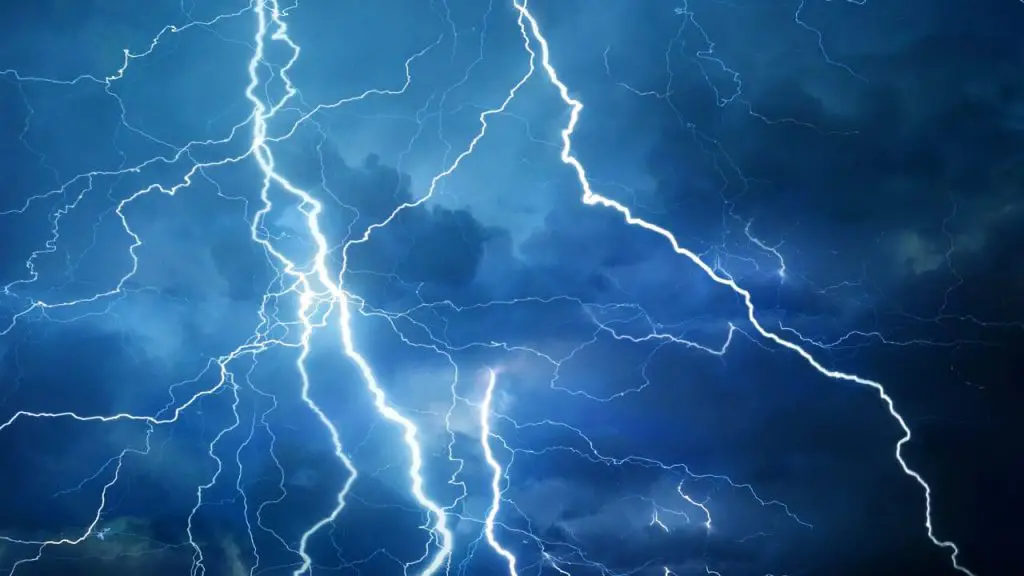You know the saying: lightning never strikes the same place twice. Well, not exactly. In fact, lightning is more likely to strike the same place again and again than not at all. There are many factors that influence where lightning hits and how often it does so.
One of the most important of these factors is the distance from a nearby thunderstorm. The greater the distance, the less likely lightning will strike again in that area for a certain period of time.
That said, there’s a limit to how far lightning can travel before weakening to a point at which it can no longer strike again. Lightning travels through what we call “lightning channels” or “leader channels” as they are known by different names depending on who you ask.
These channels act as an invisible network that allows one lightning bolt to trigger others near it with ease; these connections essentially serve as shortcuts between two points that would otherwise be unable to electrically connect with each other directly due to anything from being too distant or having too much resistance in between them.
While this network starts small and gradually gets larger over time, there’s still a limit as to how far away two different places can be while still being able to connect with one another via the lightning channel(s).

How Far Can Lightning Actually Travel?
Lightning can travel great distances, depending on the particular situation. For example, it might only travel a few kilometers under certain conditions, while in other cases it could potentially travel tens of thousands of kilometers. Therefore, it is difficult to give a definitive answer for how far lightning can travel.
The Short Answer: 10 Kilometers (or 6 Miles)
Assuming we’re talking about average, ground-based lightning, when the storm is neither too close nor too far away from you, then the channel will have time to build up a bit of a charge.
If it stays connected for long enough without discharging, it can build up enough energy to break away from its parent cloud, travel tens of kilometers away from the storm, and strike the ground at your location.
The Slightly Longer Answer: There’s no set limit for how far lightning can travel.
The distance that lightning travels once it has left the storm varies depending on a number of factors, most notably the weather conditions at the time. Weather conditions affecting how far lightning travels include Temperature and Humidity, Lightning Channels, Cloud Types, Storm Strength, and Intensity.
Temperature and Humidity
A rise in temperature and humidity increases the potential for lightning to form, but they also affect how far each individual lightning bolt travels. A lightning bolt travels a certain distance by taking the path of least resistance, and that path is dictated by environmental factors like air temperature, humidity, and wind speed.
If a bolt is traveling through a higher level of humidity and temperature, it will travel a shorter distance than if it’s in a less conducive environment.
Lightning Channels
Lightning channels are the invisible networks of ionized air that connect lightning bolts with each other. These networks are responsible for extending lightning strikes to places that might otherwise not be within the reach of a single bolt of lightning.
Lightning channels are made up of a series of charged ions that are drawn to positively charged nuclei. The channels can travel great distances but they’re fairly small and can’t always be seen by the human eye.
Cloud Types
While the exact distance that lightning travels can vary based on a wide range of factors, the general rule of thumb is that a storm has to be a certain distance away before lightning can strike again. The storm must be far enough away that the lightning bolt doesn’t have enough energy to jump from one storm to another nearby storm. Lightning travels much farther in some kinds of clouds than in others.
For example, cumulonimbus clouds (towering thunderstorm clouds) are very good at sending lightning traveling at high altitudes for very long distances. When lightning travels a long distance, the bolt typically travels in a narrow path between two different charged areas. When clouds are made primarily of ice crystals, lightning travels much less far. This is because ice crystals are less conductive than other cloud types.
Storm Strength and Intensity
Of course, the exact distance that lightning travels vary from storm to storm. The stronger the storm is and the more powerful it is, the greater the distance that the lightning bolts inside of it can travel. Stronger storms also have a higher chance of producing multiple lightning strikes than weaker storms.
How Far Can Lightning Actually Go?
As we’ve seen, the exact distance that lightning travels varies depending on the situation. In an average storm, lightning travels great distances, but there are certain situations where it can travel much farther still. Stronger storms can produce lightning that travels much farther than weaker ones. Very tall, intense storms can send lightning traveling at high altitudes for very long distances.
Strong updrafts and wind shear can extend the distance lightning travels by increasing the amount of time it stays aloft. When lightning travels a long distance, the bolt typically travels in a narrow path between two different charged areas. The most extreme example of lightning traveling a very long distance is the case of the Carrington event, which occurred in 1859.
Summing Things Up
So how far can lightning actually travel? Well, it depends on the situation, but in an average storm, lightning can travel great distances. For example, if a thunderstorm is located several miles away from where you are, then the associated lightning could potentially strike much further away than the thunder that you hear.
In general though, under most circumstances, lighting will only travel horizontally for a few miles. Stronger storms can produce lightning that travels farther still, and during the Carrington event, the lightning traveled for tens of thousands of kilometers.
Additional Contents:

